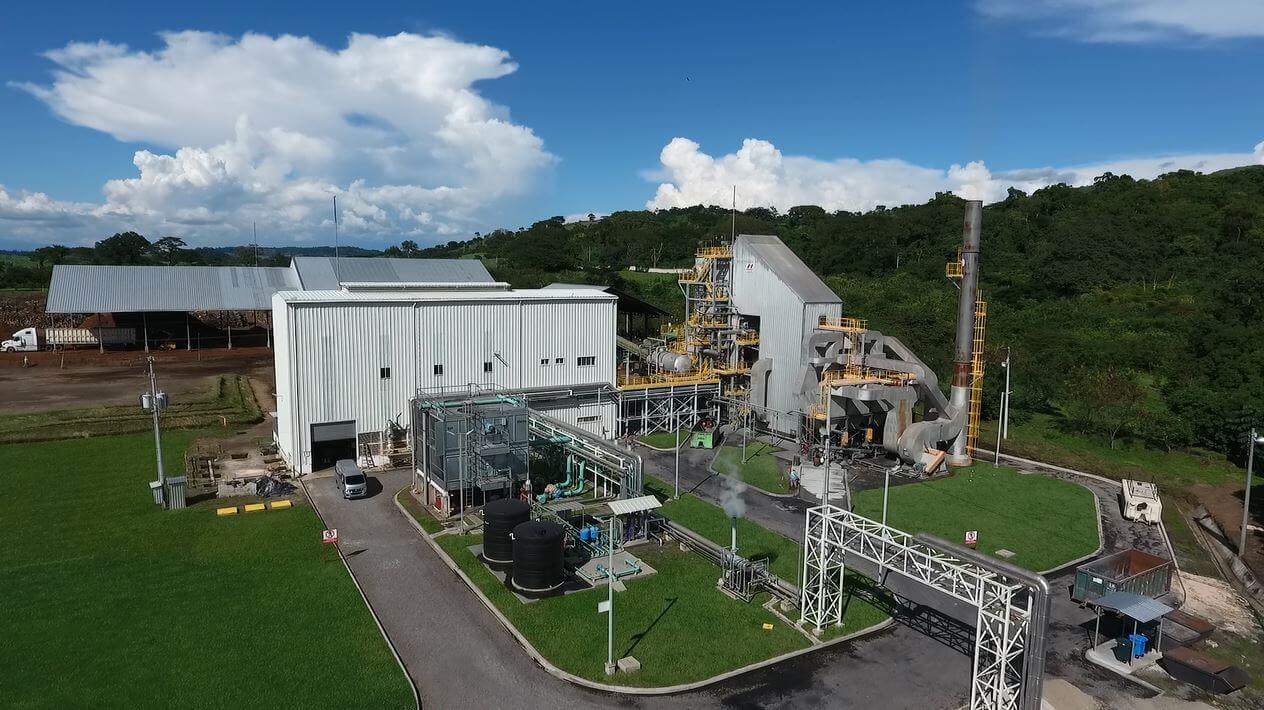Calling Planet Earth: Selling and Sourcing Eco-Conscious Apparel
In honor of Earth Month, find out how your shop can move into the eco-conscious realm in this article from the April issue of Printwear.

With spring now in full swing and another season on the horizon, shops are starting to look at what they’ll offer their clients in the coming months. One category that continues to grow both at a local and global level is eco-conscious apparel.
In 2018, Forbes cited a 47 percent increase in sustainable fashion searches for online shoppers, signaling that while these trends are growing at the retail level, there’s bound to be a ripple effect on the wholesale side. As a decorator, finding a reputable supplier for these products and knowing a few key components to share with customers can help a shop move into the eco-conscious realm in a calculated, profitable way.
FABRIC CONSTRUCTION
Ongoing fabric technologies are among the most significant components of eco-conscious apparel today.
With a concern for traditional resources growing scarce in the coming decades, developers and manufacturers are eyeing alternative sources and synthetic blends to create yarns. On the experimental side, there are a host of raw materials that innovators are experimenting with.
“It is an exciting time for eco-conscious textiles,” says Kriya Stevens, econscious. “Everything from Lotus fiber to Stinging Nettles fiber can be used as the raw materials for yarns.” Even certain strains of mushrooms, Stevens adds, are used to make vegan ‘leather.’ Many of these materials are still in the specialty fabrics stage; however, so it may be some time before these constructions reach the mainstream manufacturing sector.
When it comes to large-scale trends, parties cite recycled polyester blends as an element that continues to grow in popularity. Rachel Newman, Hanes, points to a five-percent recycled polyester blend the company has been specializing in for apparel basics. While five percent may seem like a smaller number, Newman says that when scaled across a major manufacturing operation, that five percent equates to millions of plastic bottles repurposed for what eventually becomes a T-shirt. “It just brings in a bigger, broader story,” Newman adds.
Various manufacturers now carry their own version of a recycled polyester blend bringing it much more into the mainstream. Volume varies significantly from company to company regarding how much recycled polyester fiber is used. Variance is a factor because creating the fiber is its own complicated manufacturing process, and some smaller clothing companies outsource this leg of the process to focus on product development.

Having a story to tell helps producers sell eco-conscious apparel. (Image courtesy econscious)
Outside of polyester, two other prominent eco-choices manufacturers point to are 100 percent organic cotton and hemp. Suzanne Beiter, Royal Apparel, notes the popularity of 100 percent organic cotton in everything from piqué polos to products for the infant market like onesies and blankets. Hemp meanwhile is a growing category, mostly for accessories like hats, pouches, and tote bags. Of all the eco trends, this particular fiber is still primarily dependent on both state and national legislation because the crop falls in more legally gray territory. Though the two aren’t the same, varying marijuana legislation across the U.S. has a connection to this crop’s domestic proliferation and harvesting.
FINDING A SUPPLIER
When a producer starts looking for an eco-conscious supplier, sources suggest the approach be holistic versus just looking for eco-buzzwords and trending looks or styles. This approach often requires a little extra effort on the shop’s side, but verifying where raw materials come from in addition to fabric construction will help ensure they’re dealing with a legitimate source. “(Shops) should be asking where the cotton is coming from and where is that yarn being made,” says Chris Fox, Hanes. Some manufacturers now work with domestic cotton harvesters, typically sourced in the Southeast U.S. while others use international sources. This is not necessarily a deal breaker, but there have been recent issues with offshore cotton sources, particularly in Uzbekistan where the government uses state-run programs, and, in some instances, forced labor to harvest the crop.
As the apparel manufacturing industry has notoriously been a wasteful sector of the global economy, seeking out companies who strive to conserve water, use less-volatile wastewater treatment processes, and make efforts to lower their overall energy consumption can all help a shop get on the eco-conscious path. Many apparel companies now have a dedicated person who heads up sustainability and ecological initiatives, so a shop interested in carrying eco-goods can usually get specific information from this individual, or through reports generated by that department at the company.

Decorators can focus on the quality and attention to manufacturing detail eco-apparel comes with when explaining why it carries a slightly higher price tag. (Image courtesy Royal Apparel)
SELLING IT
Like anything a shop carries, having a story or pitch to back up a product they’re trying to sell will help a producer when offering that product to customers, especially with something like eco-conscious apparel. While some manufacturers have developed more price-conscious eco-wear, many blanks in this category still come at a slightly higher price point than standard garments and accessories, and that can present a challenge for decorators. Parties suggest that decorators can sell eco-conscious apparel on a few key talking points:
Supply chain transparency. Fox notes that with some lines, a shop can point out that this is a garment that’s been given the utmost attention to detail every step of the way. “The core of our approach to this, and this has been a kind of a decades-long approach, is not so much on the specific product but on the process itself,” says Fox. If a shop is dealing with a brand that oversees everything from cotton harvesting to yarn dyeing, all the way up to cutting, sewing, and finishing, they can share this complex supply chain with the customer. Similar to cotton harvesting, many eco-conscious apparel companies operate at least a part of their manufacturing within the U.S., helping to bolster the idea of a quality product made under fair labor practices.
Higher perceived value for the end user. Generally, the quality of eco-goods will be higher, giving cause for a slightly higher price. “We are finding that more customers are looking for retail-quality promo items, and eco-apparel and accessories often offer the ideal solution because, in many instances, they are built to have a longer lifecycle than a commodity product,” Stevens adds.
Tuning in to a new generation. In all industries, the generation once disparagingly referred to as millennials are now evolving into a viable sector of the economy. This emerging demographic makes important buying decisions for companies, and factors ethicality and value into those choices. Stevens notes that decorators can stay ahead of the curve by paying attention to this generational shift. “With 85 percent of millennials reporting that they buy ‘responsible products whenever possible’ (Cone Communications, 2017), it makes a compelling case for being ready for the new, more educated consumers coming of age in the years to come,” she adds.
| Certifications to look for from eco-conscious apparel brands
There is a myriad of organizations spearheading sustainability and ecological initiatives but here are a few to keep in mind when it comes to apparel.
|

Many large-scale apparel manufacturers are pursuing ecologically-sound methods of production like using biomass as an energy source.
FINDING A NICHE
With a few elevator pitches and inspiration in their arsenal, a producer will still want to ensure they’re offering eco products to the right customers since these messages and trends won’t necessarily be a priority for all their clients. Stevens suggests any shop interested in bumping up their eco-business start by adding that category to their lineup. “Being proactive is vital to growing this portion of your business, says Stevens. “The most effective way to create demand is to present eco-options to your customers.”
Moreover, even if a shop has a large stack of clients throughout the country, Beiter stresses that starting at home is also a good strategy for entering the eco-market. “We have found that local businesses are often your best allies,” he says. “For example, breweries, restaurants, activist groups, and even tech companies have an interest in eco apparel.” He suggests looking to these niches as a springboard is a great way to get a producer on the path of building up a stack of eco-conscious clients.
Newman also says the trend is gaining more momentum, so a shop may find more interested customers than it may have before. “From our statistics, we have 60 percent of consumers (saying) they have purchased or consider purchasing eco-friendly apparel,” Newman adds.
Since it’s more of a specialized category, eco-conscious apparel won’t necessarily be an instant revenue generator for shops. It will take some foundational work to source and sell appropriately. However, with some careful research into suppliers and manufacturers, an open ear to what eco-conscious customers are interested in, and the willingness to bring in new products, this category can not only diversify a shop’s offerings, but position them as a forward-thinking business interested in working with clients from a wide swath of categories.